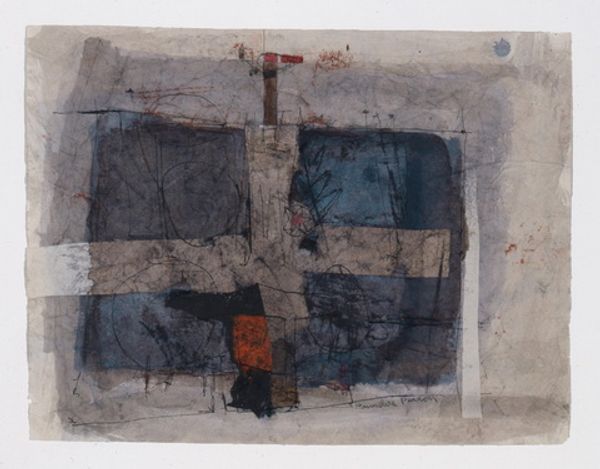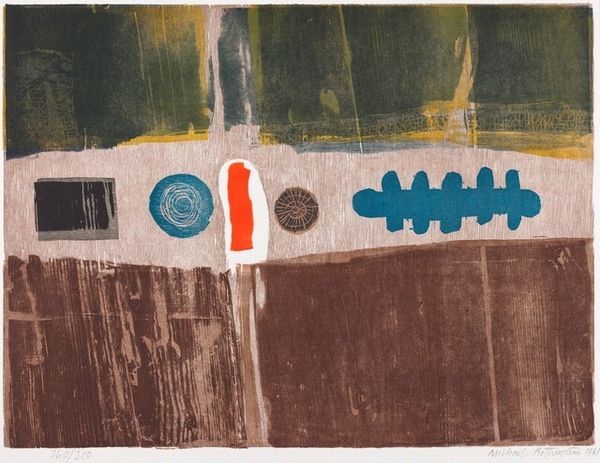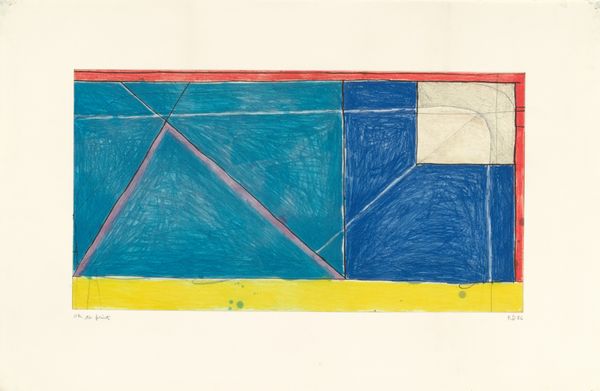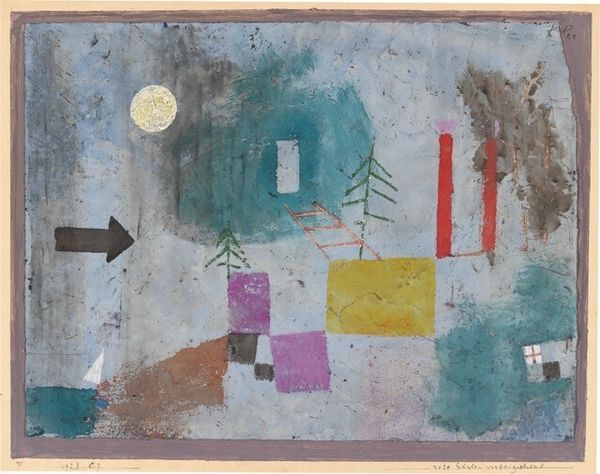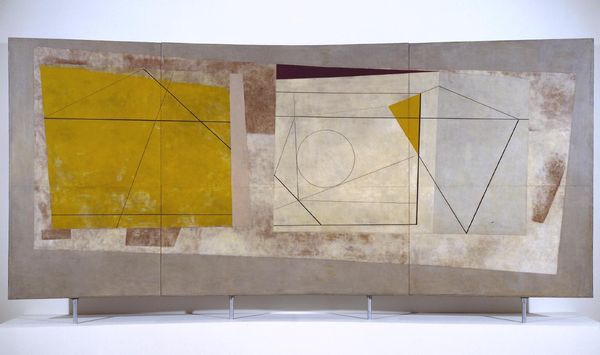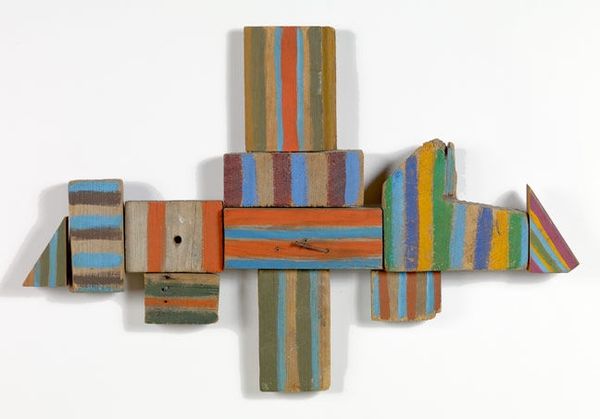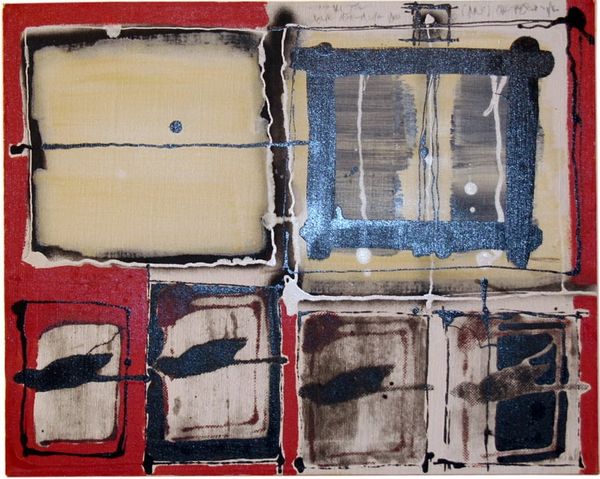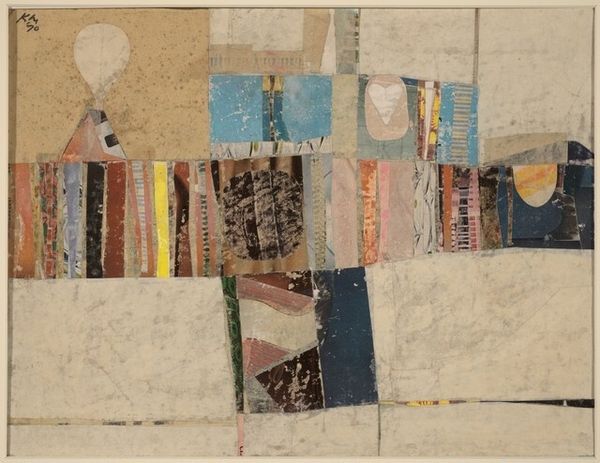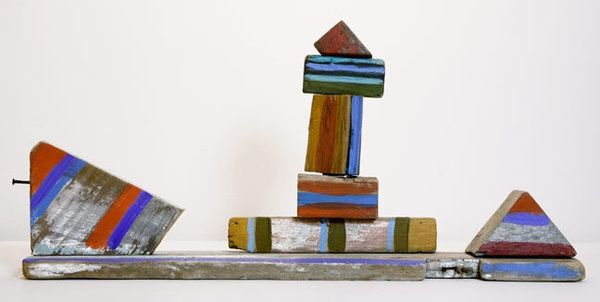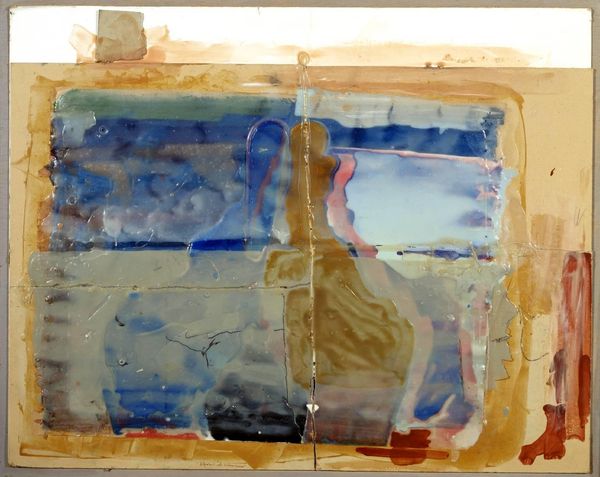
Dimensions: object: 540 x 755 x 60 mm
Copyright: © The estate of Margaret Mellis | CC-BY-NC-ND 4.0 DEED, Photo: Tate
Curator: Before us is Margaret Mellis's Number Thirty Five, a compelling construction of found materials. There’s no date assigned, but Mellis lived from 1914 to 2009, creating this piece in her later years. Editor: It has a certain beachy, weathered quality, doesn't it? The blues and browns... the way the wood is worn. It evokes a coastal atmosphere. Curator: Indeed. Mellis gathered driftwood and discarded planks to assemble these reliefs. Think about the labor involved in collecting and manipulating these materials. She's elevating the everyday, the discarded. Editor: And challenging traditional notions of art. It becomes a narrative of resourcefulness, perhaps reflecting on waste or our relationship with the environment. It makes me wonder about class too, and the artist's intentions. Curator: Absolutely. Mellis repurposed these humble materials, transforming them into something quite beautiful. Editor: It certainly provides food for thought on consumerism.
Comments
tate 7 months ago
⋮
http://www.tate.org.uk/art/artworks/mellis-number-thirty-five-t04930
Join the conversation
Join millions of artists and users on Artera today and experience the ultimate creative platform.
tate 7 months ago
⋮
Mellis trained as an artist in Edinburgh and Paris. Between 1939 and 1946 she became part of the community of avant-garde artists living and working in and around St Ives. This included Ben Nicholson and Barbara Hepworth, who lived briefly with Mellis and her husband Adrian Stokes in 1939. Impressed by the work of Nicholson and Naum Gabo she became a constructivist. This work comprises pieces of driftwood, including mahogany, pine and plywood, which she collected from the beach at Southwold, where she moved in 1976. Some of the pieces of wood were already painted when found, others were painted by the artist. She refers to her walk on the beach as a hunt and the driftwood collected as her trophies. Gallery label, August 2004
